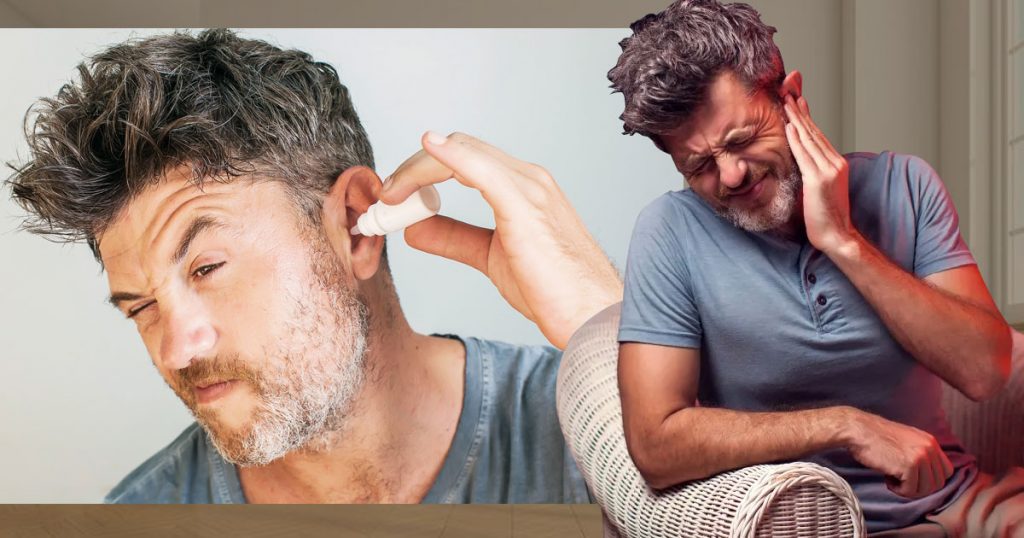An ear infection can turn an ordinary day into a battle against throbbing pain and stubborn discomfort, often without warning. While some cases need medical treatment, there are safe and effective ways to manage symptoms at home. If you have mild symptoms or want to ease discomfort while waiting for an appointment, certain remedies can help. Understanding how to treat an ear infection at home can make recovery more comfortable and reduce stress.
1. Pain Relievers for Comfort
Pain is often the most bothersome symptom of an ear infection. Over-the-counter medicine can ease discomfort and help with a fever. Adults may take acetaminophen, ibuprofen, naproxen, or aspirin as directed. For babies older than two months, acetaminophen can be given if a healthcare provider approves it. Children six months and up may take either acetaminophen or ibuprofen for relief. Avoid giving aspirin to children or teens recovering from the flu or chickenpox, as it can lead to Reye’s syndrome, a rare but serious condition.
2. Warm and Cool Compresses
A simple ear infection home remedy involves alternating warm and cool compresses. Warmth can relax muscles and ease pain, while coolness can reduce inflammation. Use a clean cloth soaked in warm water for the warm compress, and a wrapped ice pack or chilled towel for the cool one. Hold each on the ear for a few minutes before switching. Make sure the warm cloth is not hot to avoid burns.
3. Keep the Head Elevated
Resting with your head slightly elevated can encourage ear drainage and ease pressure that adds to the discomfort. This position allows fluid in the eustachian tubes to move more easily. Side sleepers should avoid lying on the affected ear, as pressure can worsen discomfort. Letting air circulate in the ear also supports healing.
4. Use a Humidifier or Steam
Dry air can make congestion worse. Running a cool mist humidifier in your room helps keep your nasal passages moist and can ease the pressure in your ears. Steam from a warm shower can also ease congestion and support natural drainage. This simple ear infection treatment at home can be especially helpful during the winter when indoor air is often drier.
5. Stay Hydrated
Keeping well-hydrated is key during ear infection recovery. Drinking fluids thins mucus, aiding drainage and reducing ear pressure. Water works best, but warm teas and clear broths also provide comfort. This simple step is one of the most effective home remedies to ease ear infection symptoms naturally.
6. Hydrogen Peroxide for Earwax Buildup
Sometimes, earwax buildup can worsen ear discomfort or contribute to infection. A gentle mix of equal parts 3% hydrogen peroxide and warm water can soften and loosen earwax. Place two drops of this solution into the affected ear for relief. This can be done twice a day for up to five days, followed by gentle flushing with a bulb syringe. Avoid this remedy if you have ear tubes or a perforated eardrum.
7. Naturopathic Ear Drops
Some over-the-counter herbal drops may offer relief from mild ear discomfort. While research on their effectiveness is limited, certain studies suggest they can work well when combined with antibiotics. These drops often contain plant extracts that may reduce inflammation. Follow the product instructions carefully, and avoid use if you have a damaged eardrum unless advised by a healthcare provider.
8. Salt Water Gargle for Sore Throat-Related Ear Pain
Ear pain sometimes comes from throat irritation, especially when the cause is a cold. Gargling warm salt water helps soothe throat inflammation and can relieve ear pressure. Mix half a teaspoon of table salt into one cup of warm water before using. Gargle for about 15 seconds, then spit. Repeat until the solution is finished. This simple habit can also help reduce harmful bacteria in the mouth and throat.
Safety Considerations for Home Treatment
Knowing how to treat an ear infection at home is helpful, but not every case can be managed without medical care. Get medical help immediately if you experience hearing loss or notice pus or bloody discharge from the ear. Other urgent signs include high fever, severe dizziness, stiff neck, seizures, or trouble breathing. Babies younger than three months with a fever need prompt evaluation.
Children and adults who develop a fever over 105°F that does not go down with treatment need urgent medical care. Avoid placing anything in the ear without a healthcare provider’s guidance, especially oils or herbal remedies with limited evidence. Some natural substances can cause harm if the eardrum is damaged.
Why These Remedies Help
Each ear infection home remedy listed here works differently. Pain relievers target discomfort and inflammation, while compresses and humidifiers improve circulation and fluid movement. Drinking plenty of fluids helps your body heal naturally, while hydrogen peroxide can clear blockages that worsen symptoms. Salt water gargles and herbal drops provide additional comfort, especially when symptoms are linked to sinus or throat issues.
Most ear infections clear up within a week or two, especially when the immune system is supported with rest, hydration, and proper symptom care. However, antibiotics may still be necessary in some cases, especially for children under two years old or those with severe symptoms.
Turning Relief Into Recovery
Home remedies can be the first steps toward faster healing and fewer future infections. Paying attention to triggers, like allergies or recurring colds, can help you prevent flare-ups before they start. Small habits, such as staying hydrated, maintaining good ear hygiene, and managing sinus health, build long-term resilience.
Think of each remedy as a tool in your personal care kit, ready to use whenever mild symptoms appear. Pairing these tools with timely medical guidance gives you the best chance of avoiding complications and protecting your hearing. Taking an active role in your care not only speeds recovery but also strengthens your confidence in handling health challenges at home.

